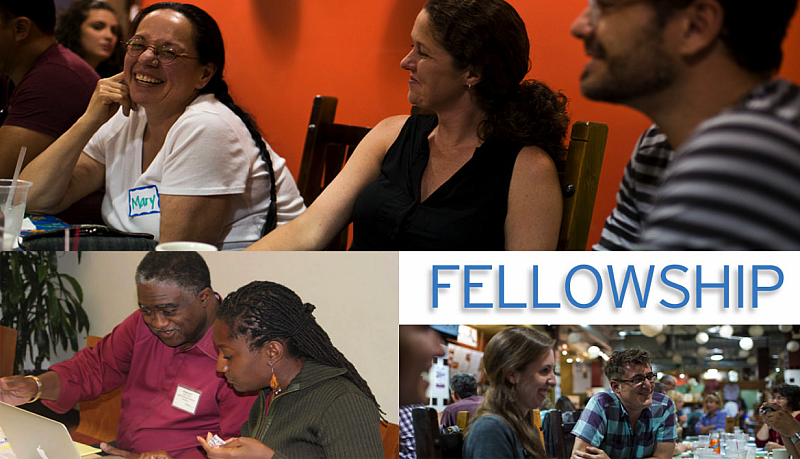Introducing the Center for Health Journalism: A new name and an enduring mission

On July 1, 2004, our center opened for business. A veteran reporter and editor with a taste for starting new ventures, I became the sole employee of what was to become an ambitious USC Annenberg School health journalism center. In those early days, I didn’t even have a desk or a phone.
Fast forward more than 10 years. Our family of programs — renamed the Center for Health Journalism today — has become the nation’s pre-eminent journalism resource focused on nurturing impactful reporting about health and place, health care access, the wellbeing for vulnerable children and families, and the underserved. We’ve gone from a California-centric Fellowship program to a national center with a broad range of programs. Among our accomplishments:
- We’ve educated more than 800 journalists and partnered with their newsrooms through our intensive fellowships.
- We've built a national "community of practice" that inspires collaboration and fellowship.
- We’ve nurtured groundbreaking health journalism projects that have changed laws, sparked new community conversations and won awards.
- We’ve brought together policy thinkers, clinicians and journalists to participate in our respected online community and our Health Matters Webinar series.
- We’ve given out hundreds of thousands of dollars worth of journalism reporting grants to support investigative and explanatory projects.
- We’ve partnered with ethnic and mainstream journalists to ensure that stories are read in outlets that matter to immigrant and minority communities.
- And, in partnership with La Opinion and Hoy, we’ve built a hyper-local community newspaper, produced by youth, which captures the stories of Boyle Heights, an immigrant neighborhood of Los Angeles.
Yet, for all this, our center still has the energy of a start-up. Bolstered by the smarts of a talented team and great advisors and the wisdom of a national community of health journalists in our network, we launch initiatives that build upon the strengths of today’s news economy. And we help journalists do great work in a time of scarcity.
You’ll see these values reflected in the new look of our website and online community, formerly Reporting on Health and now renamed Center for Health Journalism Digital. Its new colors deepen our connection with our center’s home, USC Annenberg, while evoking traditional news values with a newsprint feel.
The look matches our aims – to innovate and be bold while remaining true to traditional news values. That’s also reflected in our mission statement: “At a time of dramatic change in the media landscape, our family of programs helps journalists and community storytellers innovate, investigate and illuminate health challenges in their communities, serving as a catalyst for change."
Since our center launched, we’ve witnessed the steep decline in newsroom employment. All this heartbreak has taken place against a backdrop of enormous creativity in the internet sphere. Data can be captured and shared more easily. Communities can be reached and connections forged in both old-fashioned and digital ways. We share the best of these approaches with journalists and their newsrooms.
Of course, none of this would have been possible without the generous support and vision of The California Endowment, which has made so much of this possible, as well as newer partners who have joined forces with us to advance community health and health journalism. They include the Annie E. Casey Foundation, Blue Shield of California Foundation, the California HealthCare Foundation and the National Institute for Health Care Management Foundation.
Smart on Innovation
As we work to improve health journalism, we frequently challenge our newsroom partners and ourselves. Here are some of the questions we ask these days:
- How can journalism strengthen the health of communities across America?
- How can we extend the reach and impact of health journalism by deploying creative engagement strategies?
- How can we ensure that the right people are seeing the stories we nurture — both people in policy circles and in the communities that health journalists write about?
- How can we spur collaborations that bring together ethnic and mainstream media?
- And, what will be the impact of fielding journalism teams who come together from diverse newsrooms to work on a common project?
The next decade will undoubtedly bring new challenges to journalism. The Center for Health Journalism will be there to help journalists and their newsrooms evolve and serve their communities in ever more effective ways. In life as in work, it takes a community to progress in meaningful ways. We thank all of you who have helped build the center and hope we can continue to call upon your wisdom.
**

